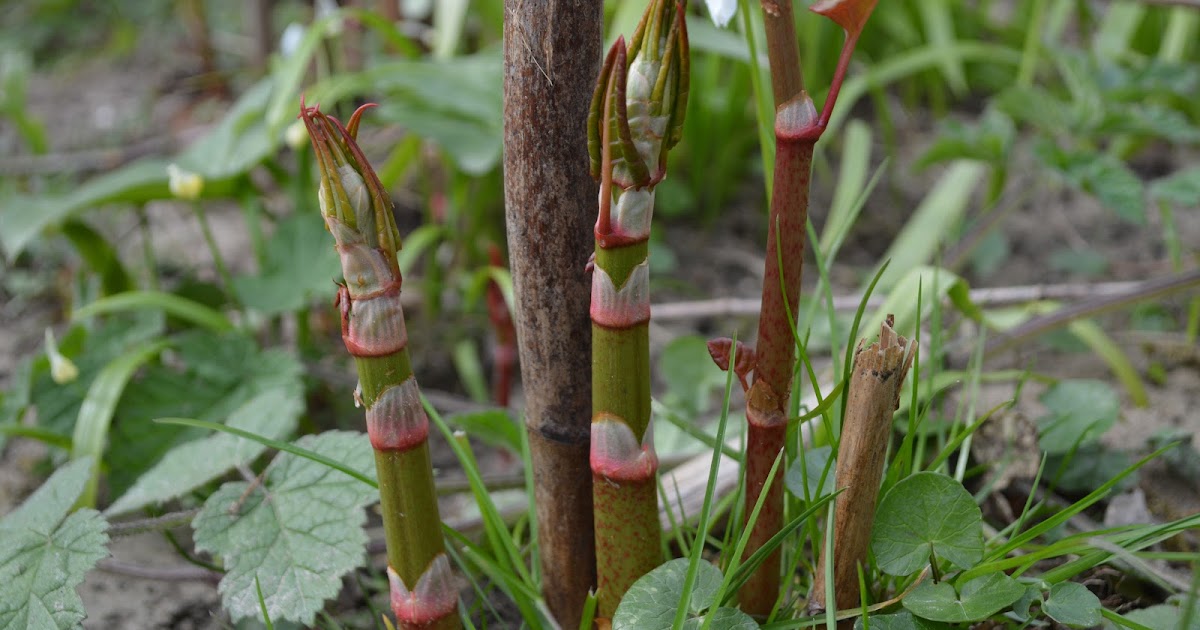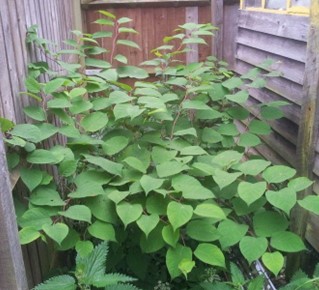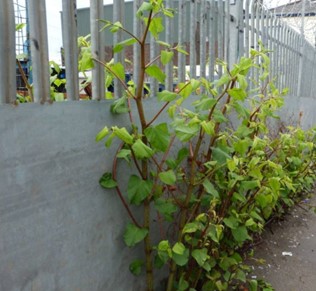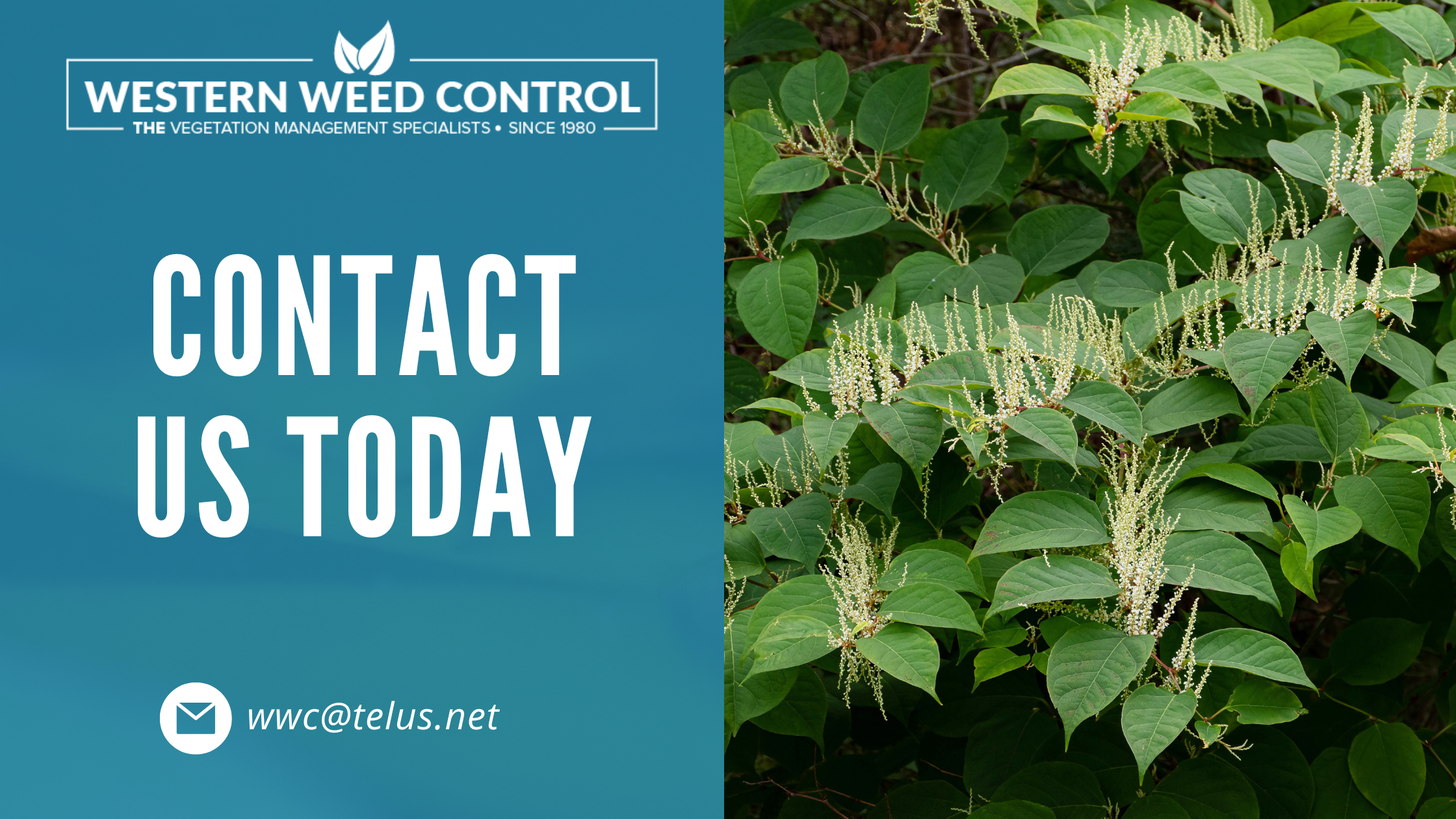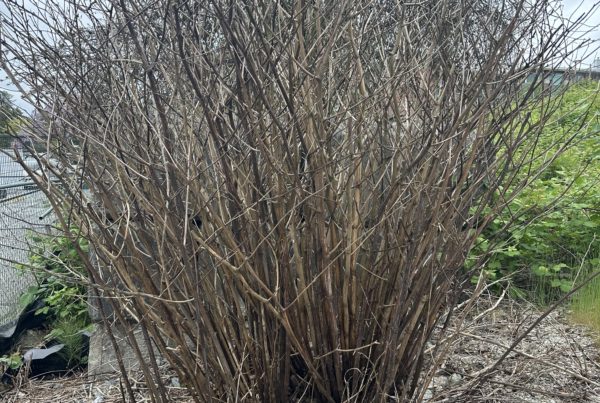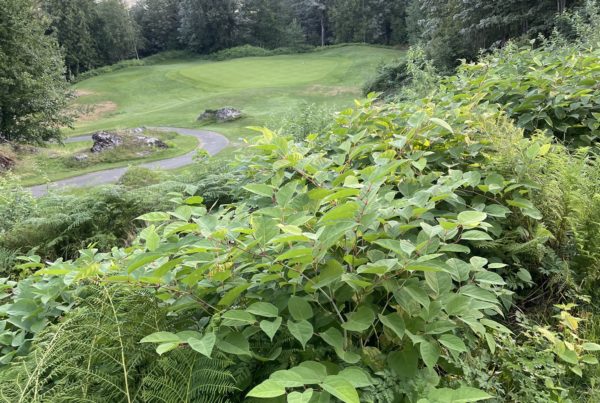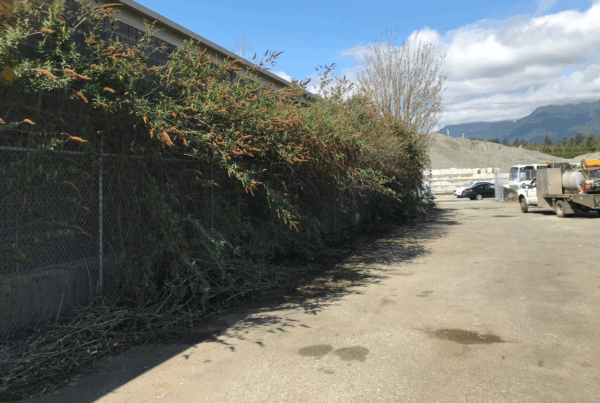As spring blooms around us and the weather begins to improve, it also marks the return of our persistent foe: Japanese knotweed. With determination, this invasive species can emerge from its winter dormancy, as early as March depending on weather conditions. Despite that it may seem like an ordinary plant, Japanese knotweed is quite the troublemaker. Let’s delve into what it is, how to spot it, and why it’s crucial to deal with it promptly.
Identifying the Intruder
Japanese knotweed is a perennial plant that poses a threat to ecological balance and infrastructure. In the early stages of spring, eyes can spot the signs of Japanese knotweed’s emergence. Look for shoots resembling asparagus piercing through the soil. These shoots soon transform into foliage with shield-shaped leaves and bamboo-like stems often with purple speckles. By late summer, clusters of small white flowers emerge, contributing to its spread through airborne seeds.
The Urgency to Attack
Without early treatment, Japanese knotweed’s rapid expansion can destabilize soil and alter local habitats. Moreover, its resilient root system can wreak havoc on structures and pose a threat to development sites, necessitating costly action plans. By disturbing the soil, broken stems and seeds, soon knotweed turns into dense clusters that are challenging to contain. To control Japanese knotweed’s encroachment, two primary approaches are employed: herbicide treatment and physical removal.
Strategic Approaches
Herbicide Application Methods:
Systemic herbicides target Japanese knotweed’s vascular root system, effectively halting its growth. Timely application during the growing season maximizes efficacy, curbing the plant’s spread. For the most effective route to eradication, 2-3 applications per year are recommended depending on the establishment of the plant, weather, and soil conditions.
Physical Removal:
Physical removal involves excavating the entire plant, including its extensive root network. When coupled with herbicide treatment to address regrowth, this method yields promising results especially during projects with time constraints such as land re-zoning for development sites.
Spring into Action
The onset of spring signals the beginning of a seasonal battle against this invasive intruder. At the first sight of shoots or green foliage from overwintered plants, take action. Western Weed Control stands ready to assist, offering expertise in the management and eradication of invasive species. Contact us at the first indication of Japanese knotweed’s return, and together, let’s come up with the right action plan for your property.


